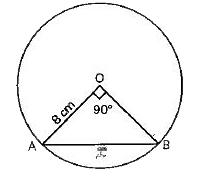Why are three parts of legs of frog folded in Z-form?
Step-by-Step Solution:
1. Observation of Frog Legs: When examining the legs of a frog, one can notice that they are structured in a Z-form. This unique shape is not just for aesthetics but serves a functional purpose.
2. Nature of Frogs: Frogs are known for their leaping ability. They are adapted to jump and move quickly from one location to another, which is essential for their survival, whether for escaping predators or catching prey.
3. Function of Z-Form: The Z-form structure of the legs allows for greater flexibility and extension. When a frog prepares to jump, the Z-form enables the legs to stretch significantly, which is crucial for generating the force needed for a powerful leap.
4. Extended Movement: The design of the legs in a Z-pattern facilitates extended movement. This means that when a frog jumps, it can cover a larger distance compared to if its legs were straight. The Z-form acts like a spring, storing energy when the legs are bent and releasing it when the frog jumps.
5. Conclusion: Therefore, the three parts of the legs of a frog are folded in a Z-form primarily to enhance their jumping ability, allowing them to leap efficiently and effectively across distances.
---
Topper's Solved these Questions
- BOOK - MODERN PUBLICATIONCHAPTER - STRUCTURAL ORGANISATION IN ANIMALSEXERCISE - NCERT FILE (NCERT EXERCISE QUESTIONS)13videos
STRUCTURAL ORGANISATION IN ANIMALS
- BOOK - MODERN PUBLICATIONCHAPTER - STRUCTURAL ORGANISATION IN ANIMALSEXERCISE - NCERT FILE (EXEMPLAR PROBLEMS) (Multiple Choice Questions)10videos
STRUCTURAL ORGANISATION IN ANIMALS
- BOOK - MODERN PUBLICATIONCHAPTER - RESPIRATION IN PLANTS EXERCISE - CHAPTER PRACTICE TEST16videos
RESPIRATION IN PLANTS
- BOOK - MODERN PUBLICATIONCHAPTER - THE LIVING WORLDEXERCISE - Chapter Practice Test16videos
THE LIVING WORLD
Similar Questions
Knowledge Check
- Question 1 - Select One
in frog oviduct is formed
Awolffian ductBBidder's canalCmetanephric ductDmullerian duct - Question 2 - Select One
The roof of the cranium of frog is formed by
AparasphenoidBalisphenoidCfrontoparietalDorbitosphenoid - Question 3 - Select One
mucus helps frog in forming
Athick skinBDry skinCsmooth skinDmoist skin
Why are the eyes of frog located on the dorsolateral sides of head and bulging outward?
View SolutionShaurya is making a greeting card for the father's day. In the card, the shaded part is folded.
What is the area of the region folded in the greeting card ?
 View Solution
View SolutionWhich part of the brain of frog is called pallium
View SolutionThe broadest and the longest part of leg of cockroach is respectively :
View SolutionThe parasphenoid bone in frog forms
View Solution

